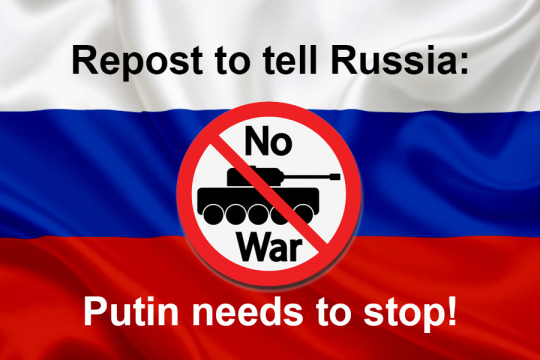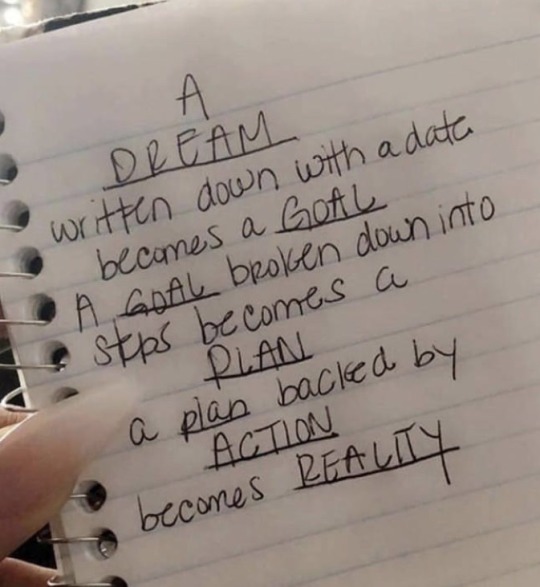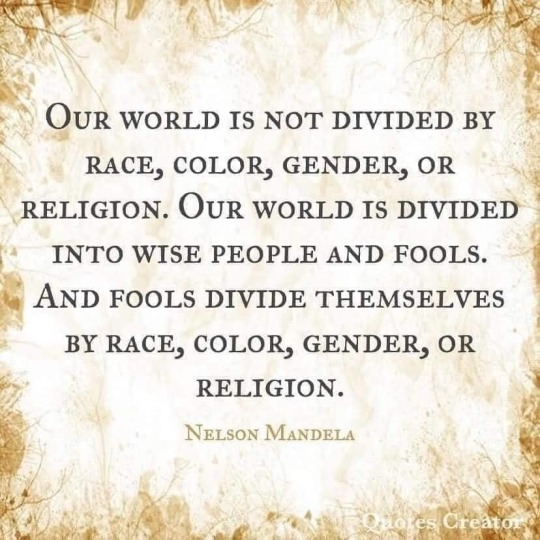Text
Man vs Machine

The number of areas of our existence that computer technology is reshaping and transforming is increasing exponentially. Realistic human likeness and behavioural replication using AI computer processing is showing technology has the ability to decrease and eventually eliminate the need for real humans in many areas of society - entertainment (both creation and presentation), business operations (identifying and executing tasks), consulting (advising and evaluating success), and more. Watching the quality of full CGI (computer generated images) characters that are already being produced in games and movies alike, indicates that mixed reality movies (where CGI is only a part of the scene) is on the way out in favour of full CGI movies with life-like generated backgrounds and actors. Why spend time on filming limited real-life actors if the digital ones can be just as believable, and never needs to sleep, hurts themselves, or have salary demands? We are not many years away from that. The question is, what real work is there for mankind to do once computers are so advanced they can do it better than 90% of the population? In the end, maybe "The Matrix" movie had it right all along - perhaps the only thing left we are needed for, is to ensure continuous power for the machines to keep humming.
1 note
·
View note
Text
Although business in 2022 is more globally connected than ever, as seen by the united sanctions enforced on Russia for going to war with Ukraine, our global nation and NATO leaders stance on war crimes has not changed since 1940 - they are still too fearful and prefer watching from the sidelines as other nations’ blood get spilled. Only time will tell if it’s the right decision in the long run, but if Ukraine falls into the hands of Russia - many true heroes will have died for nothing, only to have U.S. or NATO ride in as a false hero to change the tide in the 11th hour. But if they take this gamble, as they did in WW II, I fear history will prove it too little, too late for the true heroes of this could-be fairy tale. The ones that didn’t have a choice to wait until the odds were in their favor. We must stand with Ukraine.

5 notes
·
View notes
Photo

The best way to get things done, is to simply start.
2 notes
·
View notes
Photo

Roadmaps are dead.
Agile is a great theoretical tool for product development, but as a methodology it is vastly underestimating the need for close interaction with business stakeholders - and as such fail to scale successfully. And creating future looking roadmaps in a truly agile organization using our existing tools is all but impossible. In order to scale agile it is not more autonomy or independence that is needed, but closer collaboration with business.
Long live Outmaps.
Outmaps is my newly forged term for a new cross-functional product development process, aimed at solving many of the practical issues of scaling agile at large enterprises. At it’s core, it’s about integrating outcome-based technical solutioning with business impact mappings and systematic feedback loops. This new ProdOps methodology is what we are pioneering at Spot UX. To find out more, please follow us on LinkedIn and Twitter.
1 note
·
View note
Text
0 notes
Photo

If your goal is making money instead of making a difference you are doing it wrong.
0 notes
Text
“Write your sad times in sand, and your good times in stone.” - George Bernard Shaw
0 notes
Text

This lifesize sculpture by Masters and Munn can be yours for only $50,000 USD.
0 notes
Text
View Point.
Such a great word, one which these days seem all but lost. Facts are great, but their binary nature only apply well to small, well-defined statements. Most things in life however, are view points. It’s like looking at a cube - it needs to be turned over thoroughly to understand all the obscured sides, and where others stand to see them.
Only by asking and listening to others’ view points can we solve problems we can’t fully see (which is most of them). In today’s media-frenzied, polarized society this basic mindset is more important than ever. It’s truly the only way we can have productive discussions and reach real solutions that addresses not just a single side, but all multiple.
Most topics have answers that will never be as simple as yes or no, black or white, rain or sunshine. It may be more complicated than we’d like, but we must seek to understand opposing and differing views and (maybe most importantly) reach non-binary outcomes. Because without it, there can be no rainbows.
0 notes
Text
Playing some chess occasionally these days (after having watched “Queens Gambit”), and my style can probably be classified as “sacrificial-aggressive”. The beauty of chess is, it doesn’t matter which pieces you’ve lost - as long as you capture their king in the end.
I like surprising my opponents.
https://www.chess.com/live/game/7793509009
3 notes
·
View notes
Text
Happiness
Happiness can be elusive. Just “Be happy” people say. But one needs to feel good to be happy.
To feel good, we generally have to do acts of kindness - to be good to others. So rather then “Be happy”, maybe we should say “Be kind”. Be a good person.
Imagine the best version yourself, how would it behave? Every day is a new chance to be the best you, that day (or for a little while at least).
The more you exercise this - the “best you”, the more you will become that person. And the happier you are likely to be. Isn’t it worth trying?

(Ad is from Instagram the other day, but I find it fitting as Danimal is my empowerment nickname).
0 notes
Text

Dreams can become reality, with a plan and hard work. #motivational
0 notes
Text
Dealing with Isolation
Long but good read on how to mentally handle the COVID-19 situation.

From a psychologist:
After having thirty-one sessions this week with patients where the singular focus was COVID-19 and how to cope, I decided to consolidate my advice and make a list that I hope is helpful to all. I can't control a lot of what is going on right now, but I can contribute this.
Edit: I am surprised and heartened that this has been shared so widely! People have asked me to credential myself, so to that end, I am a doctoral level Psychologist in NYS with a Psy.D. in the specialities of School and Clinical Psychology.
MENTAL HEALTH WELLNESS TIPS FOR QUARANTINE
1. Stick to a routine. Go to sleep and wake up at a reasonable time, write a schedule that is varied and includes time for work as well as self-care.
2. Dress for the social life you want, not the social life you have. Get showered and dressed in comfortable clothes, wash your face, brush your teeth. Take the time to do a bath or a facial. Put on some bright colors. It is amazing how our dress can impact our mood.
3. Get out at least once a day, for at least thirty minutes. If you are concerned of contact, try first thing in the morning, or later in the evening, and try less traveled streets and avenues. If you are high risk or living with those who are high risk, open the windows and blast the fan. It is amazing how much fresh air can do for spirits.
4. Find some time to move each day, again daily for at least thirty minutes. If you don’t feel comfortable going outside, there are many YouTube videos that offer free movement classes, and if all else fails, turn on the music and have a dance party!
5. Reach out to others, you guessed it, at least once daily for thirty minutes. Try to do FaceTime, Skype, phone calls, texting—connect with other people to seek and provide support. Don’t forget to do this for your children as well. Set up virtual playdates with friends daily via FaceTime, Facebook Messenger Kids, Zoom, etc—your kids miss their friends, too!
6. Stay hydrated and eat well. This one may seem obvious, but stress and eating often don’t mix well, and we find ourselves over-indulging, forgetting to eat, and avoiding food. Drink plenty of water, eat some good and nutritious foods, and challenge yourself to learn how to cook something new!
7. Develop a self-care toolkit. This can look different for everyone. A lot of successful self-care strategies involve a sensory component (seven senses: touch, taste, sight, hearing, smell, vestibular (movement) and proprioceptive (comforting pressure). An idea for each: a soft blanket or stuffed animal, a hot chocolate, photos of vacations, comforting music, lavender or eucalyptus oil, a small swing or rocking chair, a weighted blanket. A journal, an inspirational book, or a mandala coloring book is wonderful, bubbles to blow or blowing watercolor on paper through a straw are visually appealing as well as work on controlled breath. Mint gum, Listerine strips, ginger ale, frozen Starburst, ice packs, and cold are also good for anxiety regulation. For children, it is great to help them create a self-regulation comfort box (often a shoe-box or bin they can decorate) that they can use on the ready for first-aid when overwhelmed.
8. Spend extra time playing with children. Children will rarely communicate how they are feeling, but will often make a bid for attention and communication through play. Don’t be surprised to see therapeutic themes of illness, doctor visits, and isolation play through. Understand that play is cathartic and helpful for children—it is how they process their world and problem solve, and there’s a lot they are seeing and experiencing in the now.
9. Give everyone the benefit of the doubt, and a wide berth. A lot of cooped up time can bring out the worst in everyone. Each person will have moments when they will not be at their best. It is important to move with grace through blowups, to not show up to every argument you are invited to, and to not hold grudges and continue disagreements. Everyone is doing the best they can to make it through this.
10. Everyone find their own retreat space. Space is at a premium, particularly with city living. It is important that people think through their own separate space for work and for relaxation. For children, help them identify a place where they can go to retreat when stressed. You can make this place cozy by using blankets, pillows, cushions, scarves, beanbags, tents, and “forts”. It is good to know that even when we are on top of each other, we have our own special place to go to be alone.
11. Expect behavioral issues in children, and respond gently. We are all struggling with disruption in routine, none more than children, who rely on routines constructed by others to make them feel safe and to know what comes next. Expect increased anxiety, worries and fears, nightmares, difficulty separating or sleeping, testing limits, and meltdowns. Do not introduce major behavioral plans or consequences at this time—hold stable and focus on emotional connection.
12. Focus on safety and attachment. We are going to be living for a bit with the unprecedented demand of meeting all work deadlines, homeschooling children, running a sterile household, and making a whole lot of entertainment in confinement. We can get wrapped up in meeting expectations in all domains, but we must remember that these are scary and unpredictable times for children. Focus on strengthening the connection through time spent following their lead, through physical touch, through play, through therapeutic books, and via verbal reassurances that you will be there for them in this time.
13. Lower expectations and practice radical self-acceptance. This idea is connected with #12. We are doing too many things in this moment, under fear and stress. This does not make a formula for excellence. Instead, give yourself what psychologists call “radical self acceptance”: accepting everything about yourself, your current situation, and your life without question, blame, or pushback. You cannot fail at this—there is no roadmap, no precedent for this, and we are all truly doing the best we can in an impossible situation.
14. Limit social media and COVID conversation, especially around children. One can find tons of information on COVID-19 to consume, and it changes minute to minute. The information is often sensationalized, negatively skewed, and alarmist. Find a few trusted sources that you can check in with consistently, limit it to a few times a day, and set a time limit for yourself on how much you consume (again 30 minutes tops, 2-3 times daily). Keep news and alarming conversations out of earshot from children—they see and hear everything, and can become very frightened by what they hear.
15. Notice the good in the world, the helpers. There is a lot of scary, negative, and overwhelming information to take in regarding this pandemic. There are also a ton of stories of people sacrificing, donating, and supporting one another in miraculous ways. It is important to counter-balance the heavy information with the hopeful information.
16. Help others. Find ways, big and small, to give back to others. Support restaurants, offer to grocery shop, check in with elderly neighbors, write psychological wellness tips for others—helping others gives us a sense of agency when things seem out of control.
17. Find something you can control, and control the heck out of it. In moments of big uncertainty and overwhelm, control your little corner of the world. Organize your bookshelf, purge your closet, put together that furniture, group your toys. It helps to anchor and ground us when the bigger things are chaotic.
18. Find a long-term project to dive into. Now is the time to learn how to play the keyboard, put together a huge jigsaw puzzle, start a 15 hour game of Risk, paint a picture, read the Harry Potter series, binge watch an 8-season show, crochet a blanket, solve a Rubix cube, or develop a new town in Animal Crossing. Find something that will keep you busy, distracted, and engaged to take breaks from what is going on in the outside world.
19. Engage in repetitive movements and left-right movements. Research has shown that repetitive movement (knitting, coloring, painting, clay sculpting, jump roping etc) especially left-right movement (running, drumming, skating, hopping) can be effective at self-soothing and maintaining self-regulation in moments of distress.
20. Find an expressive art and go for it. Our emotional brain is very receptive to the creative arts, and it is a direct portal for release of feeling. Find something that is creative (sculpting, drawing, dancing, music, singing, playing) and give it your all. See how relieved you can feel. It is a very effective way of helping kids to emote and communicate as well!
21. Find lightness and humor in each day. There is a lot to be worried about, and with good reason. Counterbalance this heaviness with something funny each day: cat videos on YouTube, a stand-up show on Netflix, a funny movie—we all need a little comedic relief in our day, every day.
22. Reach out for help—your team is there for you. If you have a therapist or psychiatrist, they are available to you, even at a distance. Keep up your medications and your therapy sessions the best you can. If you are having difficulty coping, seek out help for the first time. There are mental health people on the ready to help you through this crisis. Your children’s teachers and related service providers will do anything within their power to help, especially for those parents tasked with the difficult task of being a whole treatment team to their child with special challenges. Seek support groups of fellow home-schoolers, parents, and neighbors to feel connected. There is help and support out there, any time of the day—although we are physically distant, we can always connect virtually.
23. “Chunk” your quarantine, take it moment by moment. We have no road map for this. We don’t know what this will look like in 1 day, 1 week, or 1 month from now. Often, when I work with patients who have anxiety around overwhelming issues, I suggest that they engage in a strategy called “chunking”—focusing on whatever bite-sized piece of a challenge that feels manageable. Whether that be 5 minutes, a day, or a week at a time—find what feels doable for you, and set a time stamp for how far ahead in the future you will let yourself worry. Take each chunk one at a time, and move through stress in pieces.
24. Remind yourself daily that this is temporary. It seems in the midst of this quarantine that it will never end. It is terrifying to think of the road stretching ahead of us. Please take time to remind yourself that although this is very scary and difficult, and will go on for an undetermined amount of time, it is a season of life and it will pass. We will return to feeing free, safe, busy, and connected in the days ahead.
25. Find the lesson. This whole crisis can seem sad, senseless, and at times, avoidable. When psychologists work with trauma, a key feature to helping someone work through said trauma is to help them find their agency, the potential positive outcomes they can effect, the meaning and construction that can come out of destruction. What can each of us learn here, in big and small ways, from this crisis? What needs to change in ourselves, our homes, our communities, our nation, and our world?
0 notes
Quote
We have all gone ahead at breakneck speed, ignoring the wars, injustice, and cries of the poor and our ailing planet. We carried on regardless, thinking we would stay healthy in a world that was sick.
Pope Francis
0 notes
Text

On this International Women’s day, I want to thank a few of the women who inspired me, mentored me, and shaped me into the person I am today - both personally and professionally;
Jaylene Tsukayama - who gave me my first real job at First Hawaiian Bank, at a time when I was young and foolish - yet saw something in me, and whose work ethic, integrity, and approachable leadership I try to live up to.
Col. Williams - Tripler AMC, who entrusted me with leading a multi-million dollar army research project in my mid-twenties. Your encouragement and boundless belief in me helped me believe in myself as well.
And last but not least,
Lena Andersson - my mother and a saint for 20 years (or 40 some might argue), who was exceedingly patient and never lost her cool with me - even when I decided to move straight across the globe at age 20. Mother, wife, sister, house keeper, cashier, and colleague - even now in retirement, your energy makes every other retiree envious.
You are all examples of strong, independent women, whom I very much look up to till this day. I can only hope my daughters grow up to be future leaders and an example for others, the way you’ve been for me.
0 notes
